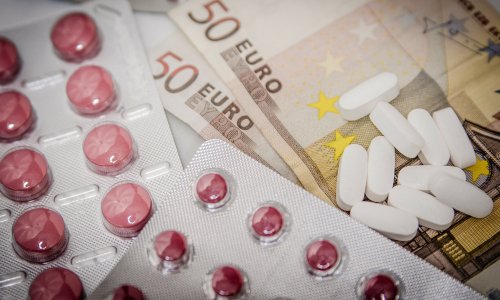Pharmaceuticals -Drop in international growth predicted
The IMS 2007 Pharmaceutical Market Forecast predicts a 5-6% international growth in the global pharmaceuticals market.
That is a slightly decrease compared with 6-7% in 2006. The global pharmaceutical sales expanding to US$665-685 billion next year. ‘In 2007, the market will be still absorbing changes that have defined a new economic reality, one in which growth is shifting from mature markets to emerging ones; new product adoption is not keeping pace with the loss of patent protection by established products; specialty and niche products are playing a larger role, and regulators, payers and consumers are more carefully weighing the risk/benefit factors of pharmaceuticals,’ said Murray Aitken, senior vice president, Corporate Strategy, IMS.
The geographic balance of the pharmaceutical market continues to shift away from the USA towards the world’s emerging markets - countries with a per-capita Gross National Income of under $20,000. These countries currently represent 17% of the global market, but will contribute 30% of growth next year. In emerging markets, the availability of healthcare is expanding, and the need for treatments for chronic diseases more typically found in developed countries is rapidly increasing.
Growth in the emerging markets is offsetting the slower growth coming from the US market, which will contribute about 36% of total market growth in 2007, significantly less than the 54% it contributed five years earlier.
The number of new product launches in 2007 expected to be between 25-35, comparable to this year’s expected 30 launches. However, with pharmaceutical companies increasingly developing specialty products and treatments to serve niche markets, new products are contributing less to overall market expansion than previously. Moreover, market expansion from new products is not keeping pace with the loss of patent protection by older products. In 2007, marketed products with a value over $16 billion will likely lose patent protection, which comes on top of US$23 billion of products that lost protection in 2006.
Several sectors of the market are expected to register high levels of demand in 2007, particularly biotechnology, with estimated growth of 13-14%, specialist-initiated products with 10-11% growth, and the generics market with 13-14% growth. In the generics sector, growth is stemming from opportunities in several key therapeutic areas and increased volume driven by cost-control initiatives.
The total number of blockbuster products continues to grow and is expected to reach 112 in 2007, up from 94 in 2005. In 2007, the potential blockbuster products launched will be paliperidone for schizophrenia, desvenlafaxine for depression and vildagliptin for diabetes.
‘Undoubtedly, the most powerful force rebalancing growth in the worldwide market is pressure from public/private payers to limit their expenditures on drugs,’ Murray Aitken pointed out. ‘Their influence is offsetting much of the growth that stems from rising demand and innovation. Manufacturers increasingly must strengthen the evidence that their therapies deliver value for money based on direct health outcomes.’
Europe - the top five markets (France, Germany, United Kingdom, Italy and Spain) combined are forecast to grow 3–4%, down from the 4-5% pace expected in 2006. While these countries see increased demand from an aging population, growth is being affected by cost-containment measures, incentives for using generics and increased scrutiny of the cost/benefit of drugs.
Therapeutic classes
The demand for oncology treatments has increased and there has been a strong flow of innovation. Science has changed the face of the disease; survival rates are improving and some cancers are now considered chronic illnesses or even preventable conditions.
Pharmaceuticals to treat oncology are expected to reach US$40-45 billion in value in 2007, contributing nearly 20% of total market growth. ‘Through 2007, this class will expand rapidly as more patients gain access to treatment from a growing range of therapies,’ Murray Aitken pointed out, adding: ‘But oncology products will eventually be subject to tighter pricing and usage parameters as payers deal with their mounting costs.’
Among other major therapy classes, the lipid-lowering class (including statins, Zetia and Vytorin) will grow to US$30-33 billion, reflecting an estimated 1-2% growth in 2007, down from 7-8% this year. While the 2006 patent losses for simvastatin (Zocor) and pravastatin (Pravachol) will continue to affect growth, increased public awareness of the efficacy of lipid-lowering agents, broader patient screening and new combination therapies will continue to drive demand, the report states.
Implications for manufacturers
‘Pharmaceutical companies have started to reinvent themselves in response to market challenges, and they look very different than just five years ago,’ Murray Aitken said. ‘But it is no longer enough just to be responsive. To succeed, companies need to get ahead of the dynamics that are rebalancing the market. This requires a greater reliance on scenario-based planning, a sharper focus on realising productivity gains from sales and marketing expenditures, and proving the value of medications as never before.’
Details: www.imshealth.com
14.11.2006




